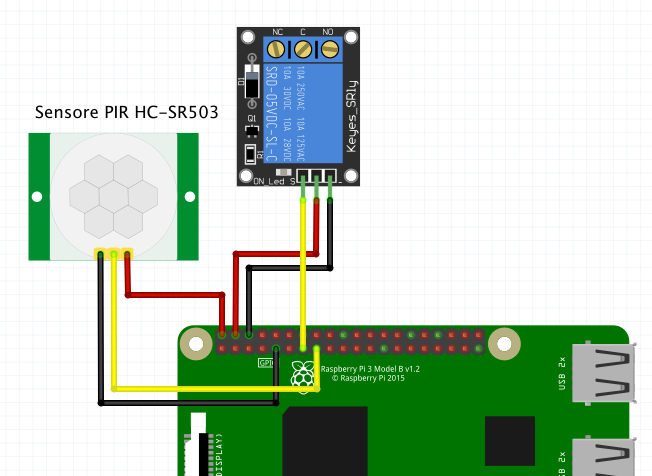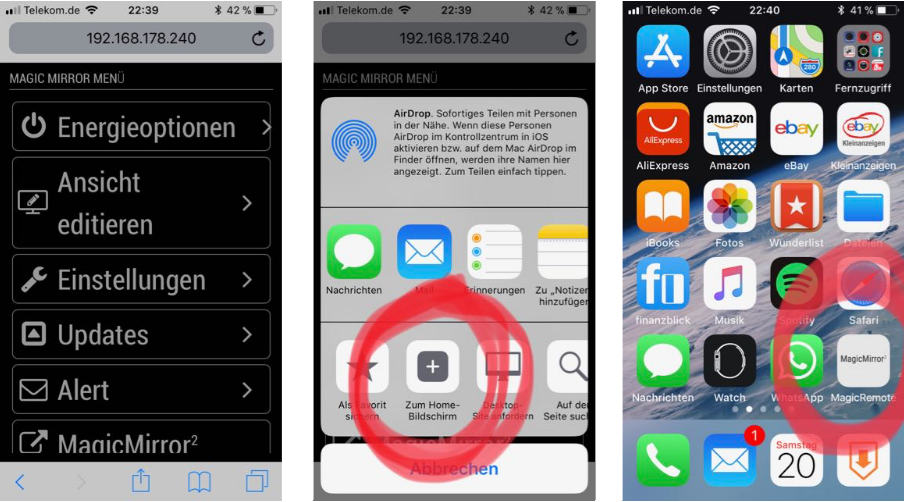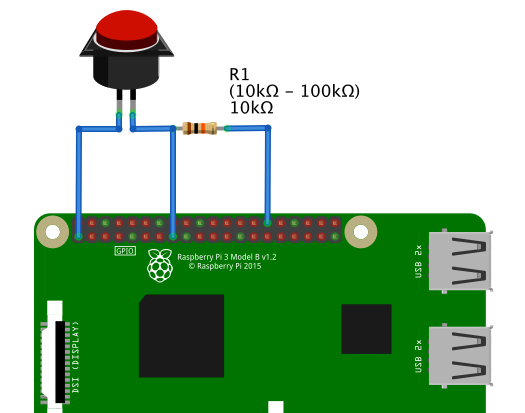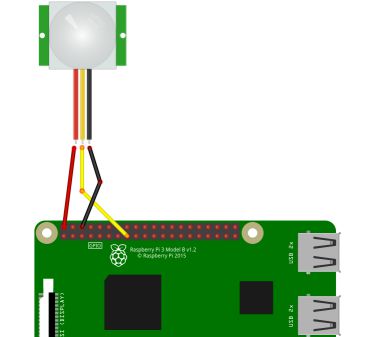Read the statement by Michael Teeuw here.
{HowTo} turn on/off your monitor (Time based, PIR/Button, App)
-
Well, for my solution it is totally necessary to NOT use the PIR-Module. You must use just my external script solution!
Tests i made working fine… :)Anyhow… You could try to use clear nail polish.
I used it to cover certain regions and it works :)
Just paint several layers of the polish over the area u want to cover.Or play with the sensitivity

-
I actually use option 2.2 - external script and already set both sensitivity and time delay to minimal (all the way to left).
would you mind to send me your pir.py?
Regards,
-
Sure, my pir.py is the same as shown on point 2.2 but with other GPIO used
#!/usr/bin/env python import sys import time import RPi.GPIO as io import subprocess import pigpio io.setmode(io.BCM) SHUTOFF_DELAY = 119 # seconds PIR_PIN = 25 # 22 on the board LED_PIN = 16 def main(): io.setup(PIR_PIN, io.IN) io.setup(LED_PIN, io.OUT) turned_off = False last_motion_time = time.time() while True: if io.input(PIR_PIN): last_motion_time = time.time() io.output(LED_PIN, io.LOW) print ".", sys.stdout.flush() if turned_off: turned_off = False turn_on() else: if not turned_off and time.time() > (last_motion_time + SHUTOFF_DELAY): turned_off = True turn_off() if not turned_off and time.time() > (last_motion_time + 1): io.output(LED_PIN, io.HIGH) time.sleep(.1) def turn_on(): subprocess.call("sh /home/pi/lights_on.sh", shell=True) def turn_off(): subprocess.call("sh /home/pi/lights_off.sh", shell=True) if __name__ == '__main__': try: main() except KeyboardInterrupt: io.cleanup()Because i use some LED Stripes which turn on when the pir detects movement my “monitor_on.sh” is called “lights_on.sh”
lights_on.sh:
vcgencmd display_power 1 pigs p 17 1 pigs p 22 1 pigs p 24 1 sleep 0.06s pigs p 17 2 pigs p 22 2 pigs p 24 2 sleep 0.06s pigs p 17 3 pigs p 22 3 pigs p 24 3 sleep 0.06s pigs p 17 4 pigs p 22 4 pigs p 24 4 sleep 0.06s pigs p 17 5 pigs p 22 5 pigs p 24 5 sleep 0.06s pigs p 17 6 pigs p 22 6 pigs p 24 5 sleep 0.06s pigs p 17 7 pigs p 22 7 pigs p 24 6 sleep 0.06s pigs p 17 8 pigs p 22 8 pigs p 24 7 sleep 0.06s pigs p 17 9 pigs p 22 9 pigs p 24 8 sleep 0.06s pigs p 17 10 pigs p 22 10 pigs p 24 9 sleep 0.06s pigs p 17 11 pigs p 22 11 pigs p 24 10 sleep 0.06s pigs p 17 12 pigs p 22 12 pigs p 24 11lights_off.sh:
pigs p 17 12 pigs p 22 12 pigs p 24 11 sleep 0.06s pigs p 17 11 pigs p 22 11 pigs p 24 10 sleep 0.06s pigs p 17 10 pigs p 22 10 pigs p 24 9 sleep 0.06s pigs p 17 9 pigs p 22 9 pigs p 24 8 sleep 0.06s pigs p 17 8 pigs p 22 8 pigs p 24 7 sleep 0.06s pigs p 17 7 pigs p 22 7 pigs p 24 6 sleep 0.06s pigs p 17 6 pigs p 22 6 pigs p 24 5 sleep 0.06s pigs p 17 5 pigs p 22 5 pigs p 24 5 sleep 0.06s pigs p 17 4 pigs p 22 4 pigs p 24 4 sleep 0.06s pigs p 17 4 pigs p 22 4 pigs p 24 4 sleep 0.06s pigs p 17 3 pigs p 22 3 pigs p 24 3 sleep 0.06s pigs p 17 2 pigs p 22 2 pigs p 24 2 vcgencmd display_power 0 sleep 0.06s pigs p 17 1 pigs p 22 1 pigs p 24 1 sleep 0.06s pigs p 17 0 pigs p 22 0 pigs p 24 0
But what exactly doesn’t work with my script? Maybe i can help :)
-
Thanks @cruunnerr.
In my case, no LED involved hence should be simpler :)
I run PIR.PY externally (via PM2) to call monitor on/off shell script and everything seems to work fine i.e.: turn screen blank and back on does work. No error reported. Its just the adding your script does not seems to make any difference, the turn on still instant.
Here is my PIR.py file
#!/usr/bin/env python import sys import time import RPi.GPIO as io import subprocess io.setmode(io.BCM) SHUTOFF_DELAY = 15 # seconds delay to turn off PIR_PIN = 17 # Pin 11 on the board TURNON_DELAY = 10 # seconds delay to turn on def main(): io.setup(PIR_PIN, io.IN) turned_off = False last_motion_time = time.time() while True: if io.input(PIR_PIN): last_motion_time = time.time() sys.stdout.flush() if turned_off and time.time() > TURNON_DELAY: turned_off = False turn_on() else: if not turned_off and time.time() > (last_motion_time + SHUTOFF_DELAY): turned_off = True turn_off() time.sleep(.1) def turn_on(): subprocess.call("sh monitor_on.sh", shell=True) def turn_off(): subprocess.call("sh monitor_off.sh", shell=True) if __name__ == '__main__': try: main() except KeyboardInterrupt: io.cleanup()Here is the monitor_off.sh
#! /bin/bash export DISPLAY=:0 xset dpms force offAnd Monitor_on.sh
export DISPLAY=:0 xset dpms force on -
Hey mate,
you are using this script.
As i wrote in my post, it was just brainstorming. I never tested this script. :(But i can imagine that this will not work… For a Turn_on delay u probably need a loop-function.
But when i read your posts i can’t find, that u need this :D
So just try the script from the original 1# post :) -
Hello,
I‘m using the PIR python-script-method.
It is working fine… but, my mirror is installed in a floor, where people are crossing the mirror several times a day without looking at it.It would be a helpful solution, if the script switches on the monitor if a person is standing in front of the mirror for 6 seconds.
Is there a possibility for modifying the script ?
-
This will not work with a simple motion detector. Because “standing” is not “motion”. ;)
Then u would need a light barrier or something like that.
Or u need to shake your body for 6 seconds in front of the mirror XD
-
I wouldn’t know how to program it but you could try playing around with a photo resistor like this or this. But I think that will only work if you have constant light conditions. Maybe an IR light barrier with a reflector on the other side would work better.
No idea if what you want is possible but that would be an awesome project.
-
Or use an ultrasonic sensor. You could let it measure the distance and if its under a specific value for a specific time it could turn on the monitor
-
Would you mind sharing how you wired your LED to pin16 in step 2.2 Using PIR-Script for LED_PIN = 16?
are you using resistors or mosfets etc? im a noob and dont want to break anything.





